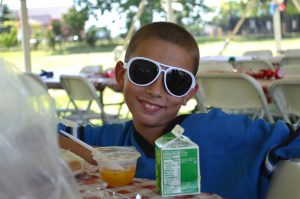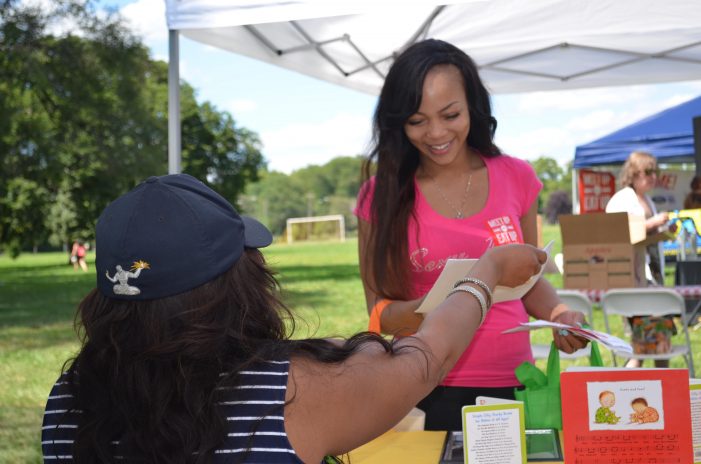For some Michigan youth summer is the hungriest time of year.
While the season ushers in cookouts and picnics, a daily challenge for low-income households is stretching the meal budget to feed youth who’d normally enjoy one or more meals at school.
With the annual closing of student lunchrooms comes the annual opening of Meet Up and Eat Up. Through the Michigan No Kid Hungry (MNKH) initiative Meet Up and Eat Up was launched in 2013, to help nourish thousands of Michigan youth who qualify for free and reduced-cost school meals. Located in more than 1,000 sites statewide, the program is free to anyone 18 or younger, and to students older than 18 who receive school district services, such as disability support.

“At this time of the year, the most important thing for us is amplifying the message that Meet Up and Eat Up has started,” says Sara Gold, director of United Way of Southeastern Michigan’s Healthy Kids Program.
United Way serves as a liaison between the state of Michigan, which sponsors MNKH, and community partners who implement Meet Up and Eat Up as meal-providers. Meet Up and Eat Up is an evolution of the 40-year-old U.S. Department of Agriculture’s nationwide Summer Food Service Program.

Photo: LiveUnitedSEM
Last year Meet Up and Eat Up programs served 1.2 million meals in Wayne, Oakland, and Macomb counties. There has also been active meal service in Flint and Genesee County, with 136,440 served in Flint and 184,583 served in the county in 2016. Meet Up and Eat Up sites become active near the last days of class held at schools in their assigned neighborhood. Part of United Way’s mission is to inform as many families and communities as possible that Meet Up meals are available throughout the summer, during hours when students would normally be in lunchrooms, until mid-August, Gold says.
“You can find a Meet Up and Eat Up pretty much any place where kids gather,” Gold says.
Sites range from neighborhood parks and community centers to organized youth programs, like church vacation bible schools and athletic team practices. Some programs even incorporate special activities, like the YMCA, which delivers food and hosts exercise sessions.
Families can learn about the nearest Meet Up times and locations by dialing 2-1-1 for referral sites closest to their home, or by texting the word “FOOD” to 877877. While no one should be turned away at any site, researching host locations might prevent students from feeling out of place if a particular youth group or team is the majority served there, Gold says. Beyond the location, text service doesn’t specify whether a particular group is served at a site.
Meal-providers, caterers who prepare and deliver lunches, are recommended through community action networks, food banks, and similar sources. But the word “lunch” is used loosely to describe Meet Up gatherings, as partners and coordinators have discretion to schedule the best time of day to feed youth in targeted neighborhoods, identified according to the number of low-income households present, Gold says.
Although 580,000 Michigan students receive free and reduced-cost lunch, only about 17.5 percent will access a summer meal program of any kind, according to a United Way report. At Michigan schools where no fewer than 20 percent of youth qualify for reduced-cost lunch while class is in session, some students eat as often as three times daily, including after-school snacks, Gold adds.
Along with supplementing food budgets, Meet Ups guarantee youth enjoy, nutritious meals. A typical menu might include a chicken wrap, carrot sticks, and a side of crackers, served with low-fat milk.
“It’s important for us to make sure people know that the food being served is nutritious,” Gold says. “Well-balanced meals and a lot of care go into the process.”
Editor’s note: Families can learn about the nearest Meet Up times and locations by dialing 2-1-1 for referral sites closest to their home, or by texting the word “FOOD” to 877877



